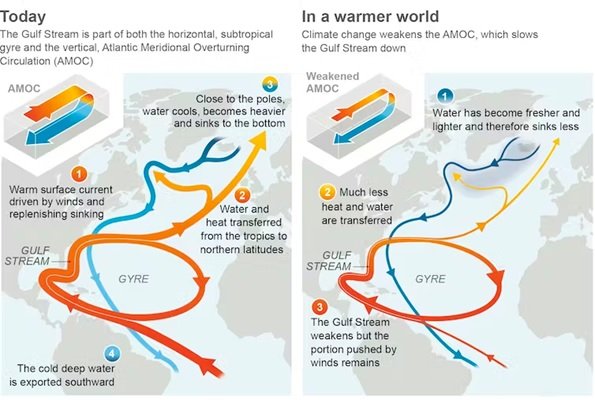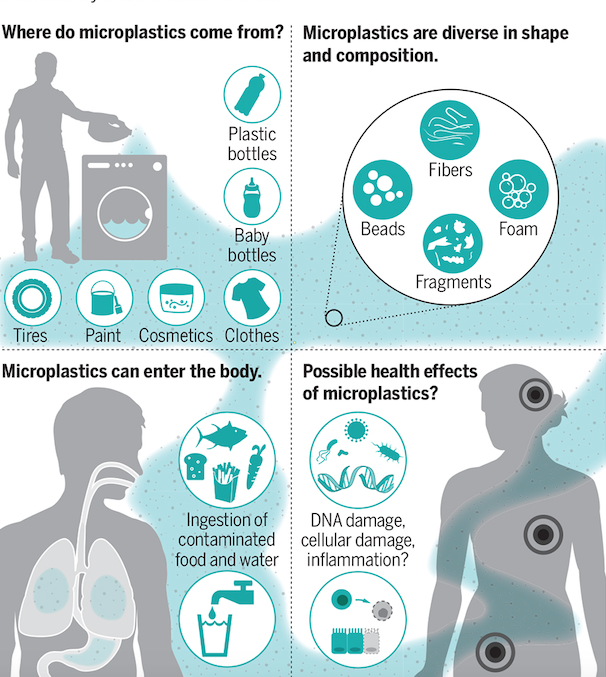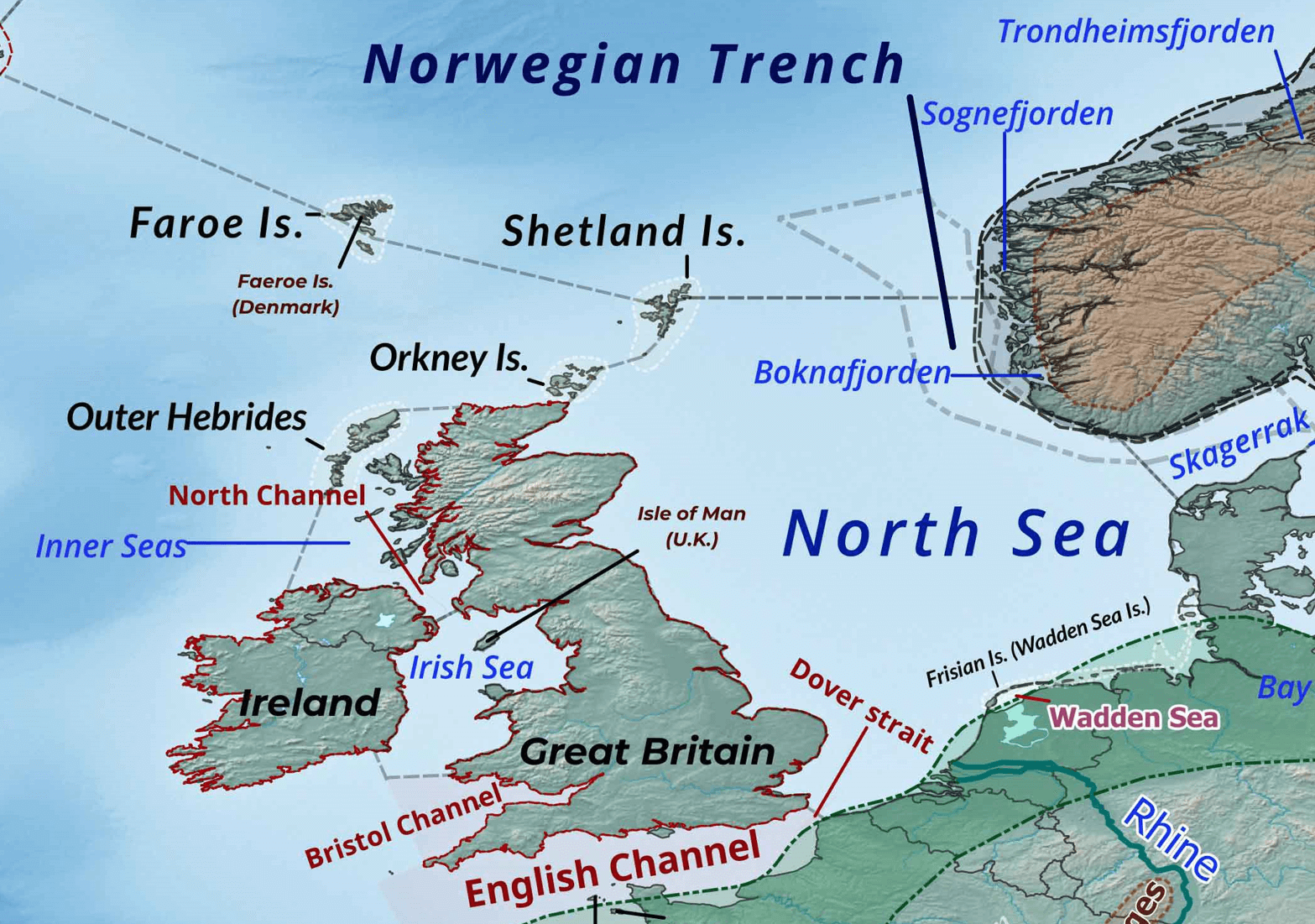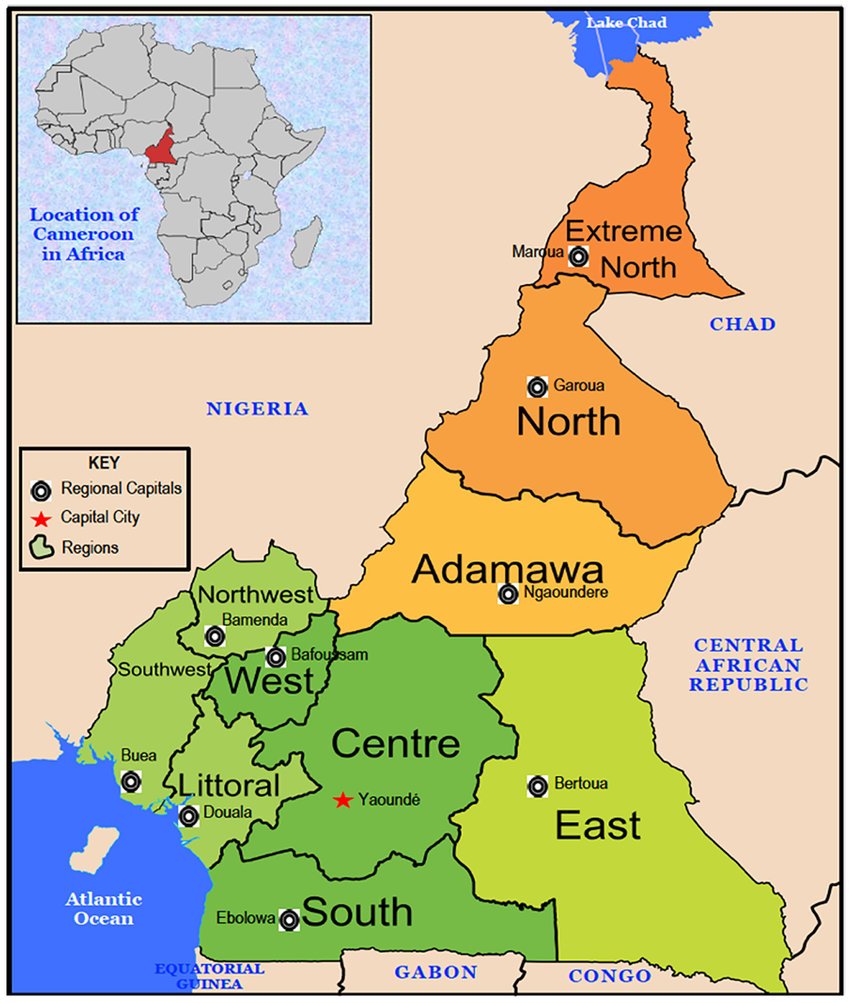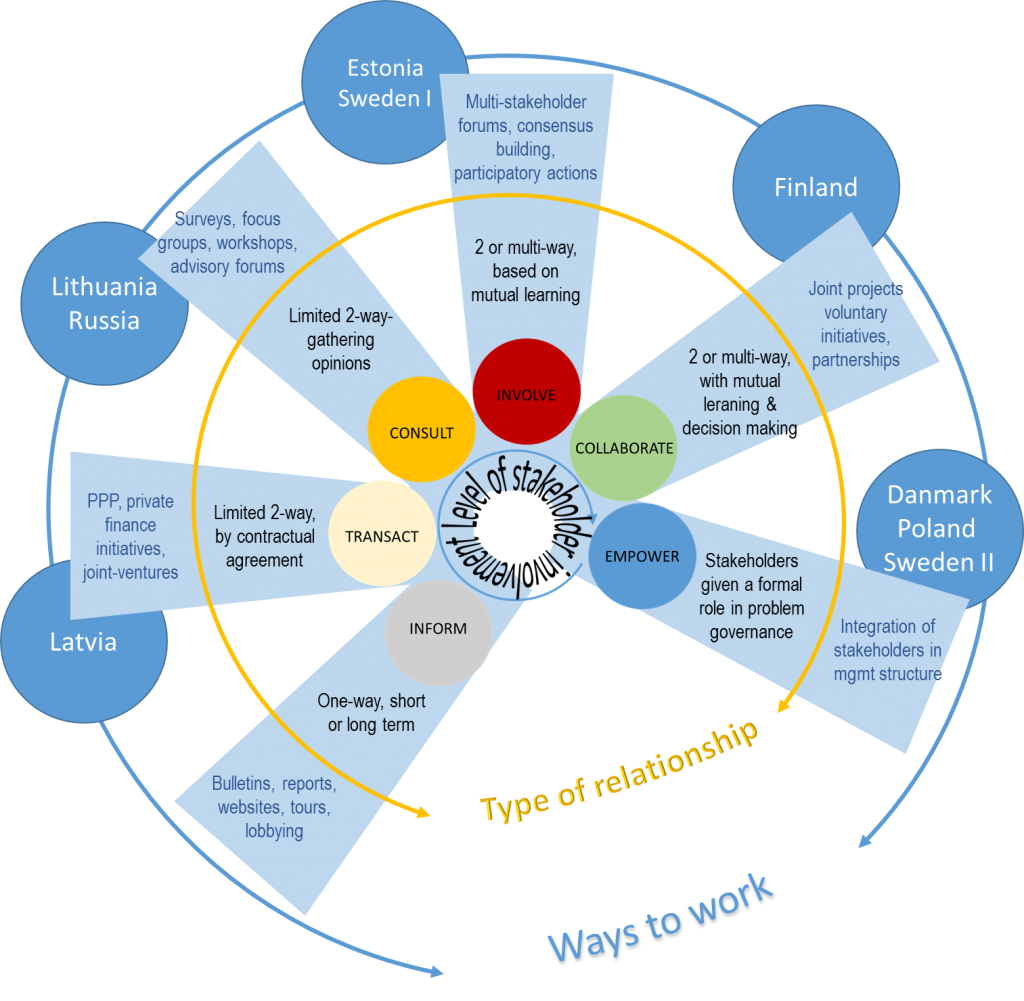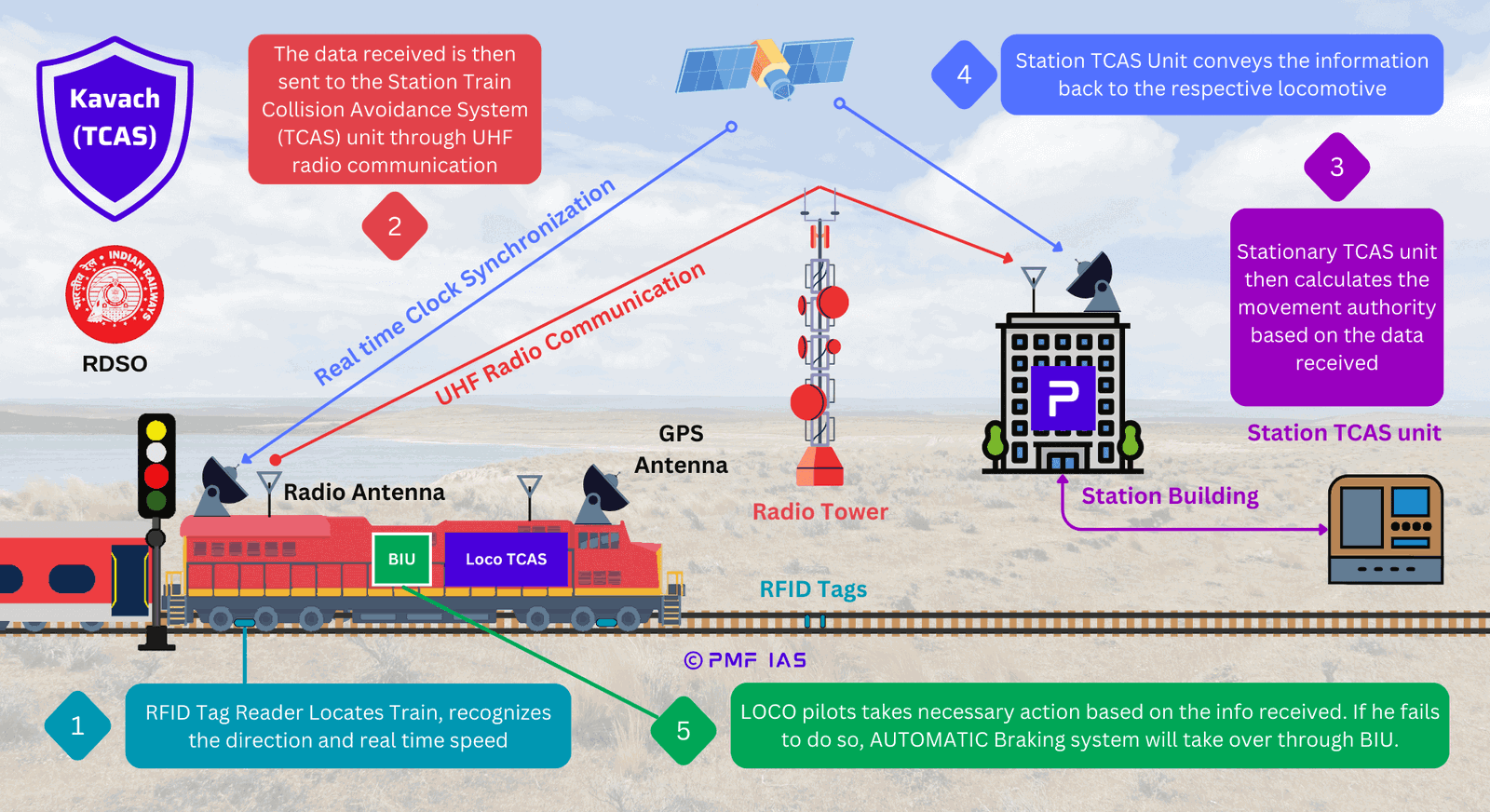
Current Affairs December 27, 2023: Bharatiya Sakshya Adhiniyam, 2023, Places of Worship Act, 1991, Lantana Camara, T+0 Settlement, Declining Number of Tigers, INS Imphal, 5G Auctions
Subscribers of "Current Affairs" course can Download Daily Current Affairs in PDF/DOC
Subscribe to Never Miss an Important Update! Assured Discounts on New Products!
Must Join PMF IAS Telegram Channel & PMF IAS History Telegram Channel
{GS – Polity – Parliament} Types of Grants
- Context (TH): The government had raised the demand for supplementary grants for MGNREGS.
- Higher-than-budgeted revenue expenditure may push the fiscal deficit to 6% of GDP.
Types of Grants
Supplementary Demand for Grants
- It is raised when the expenditure exceeds the Parliament-authorised amount for that year.
- Parliament must pass this before the end of the financial year.
Additional Grant
- It is raised if additional expenditure is needed upon an uncontemplated new service that budget year.
Excess Grant
- It is granted when money is already spent on any service during a financial year over the amount granted for that service in the budget for that year.
- The Lok Sabha votes on it after the financial year.
- Before that, they must be approved by the Public Accounts Committee of Parliament.
Vote of Credit
- It is granted for an unexpected demand on account of the service’s magnitude or indefinite character.
- It is like a blank cheque given to the Executive by the Lok Sabha.
Exceptional Grant
- It is granted for a particular purpose and forms no part of the current service of any financial year.
Token Grant
- It is granted for the re-appropriation of available funds without additional expenditure.
|
{GS2 – IR – Global Trade} Disruptions in Global Trade
- Context (IE): Red Sea attacks and drought in the Panama Canal are disrupting global trade routes.
- India’s supply of Russian oil is safe as Russia, Houthis, and Iran are on the same side.
Slowing trade in the Panama Canal
- Shipping via the Panama Canal has dropped by over 50% due to drought conditions.
- Due to the water shortage, ships from Asia to the US take the six-day longer Suez Canal route.
- Some vessels are participating in pricey auctions to expedite their transit through the Panama Canal.
Causes of drought
- One of the driest rainy seasons in Panama caused the canal’s diminishing water levels.
- Periodic droughts are not uncommon; the intensity and duration of the current drought are alarming.
- Climate change and the El Nino phenomenon are exacerbating the drought conditions in Panama.
Impact of Panama drought
- Authorities restricted vessels’ weight and the number of ships passing through the canal.
- Ships are experiencing extended waiting times with a cascading effect on global supply chains.
- Preliminary estimates suggest a potential $200 million drop in earnings in 2024.
Panama Canal
|
{GS2 – MoHA – Laws} Bharatiya Sakshya Adhiniyam, 2023
- Context (PRS | LM): Three Criminal law bills, including Bharatiya Sakshya Adhiniyam (BSA), have become acts after ascent by the president.
- BSA replaces the Indian Evidence Act (IEA), which has not kept up with technological advancements and societal changes.
- It aims to ‘consolidate and to provide for general rules and principles of evidence for fair trial’,
About IEA,1872
- The Imperial Legislative Council passed the Indian Evidence Act in 1872, establishing the guidelines for admissible evidence in Indian courts.
- It applies to all civil and criminal proceedings.
- In 2000, the IEA was amended to provide for the admissibility of electronic records as secondary evidence.
- In 2013, it was amended to add provisions related to consent in cases of rape.
- It shifted the onus on the accused to prove that consent was given.
- The character of the victim and her sexual history would not be relevant when determining consent.
Key Features of Bharatiya Sakshya Adhiniyam (BSA)
Provisions of the IEA retained in BSA
Admissible evidence
- Parties involved in a legal proceeding can only present admissible evidence.
- Admissible evidence can be classified as ‘facts in issue’ or ‘relevant facts’.
|
A proved fact
- A fact is considered proven when, based on the evidence presented, the Court believes it to either (i) exist or (ii) its existence is so likely that a prudent man should act as if it exists in the circumstances of the case.
Police confessions
- Any confession made to a police officer is inadmissible.
- Confessions made in police custody are also inadmissible unless recorded by a Magistrate.
- However, if a fact is discovered due to information received from an accused in custody, that information may be admitted if it distinctly relates to the fact discovered.
Key changes
Documentary evidence
- Under the IEA, a document includes writing, maps, and caricatures.
- The BSA adds that electronic records will also be considered as documents.
- Documentary evidence includes primary and secondary evidence. The BSA retains this classification.
|
Oral evidence
- Under the IEA, oral evidence includes statements made before Courts by witnesses about a fact under inquiry.
- The BSB allows oral evidence to be given electronically.
- This would permit witnesses, accused persons, and victims to testify electronically.
Admissibility of electronic or digital records as evidence
- Documentary evidence includes information in electronic records printed or stored in optical or magnetic media produced by a computer.
- Such information may have been stored or processed by a combination of computers or different computers.
- The BSB provides that electronic or digital records will have the same legal effect as paper records.
- It expands electronic records to include information stored in semiconductor memory or communication devices.
- This will include email records, server logs, smartphones, locational evidence and voice mails.
Secondary evidence
- The BSA expands secondary evidence to include (i) oral and written admissions and (ii) the testimony of a person who has examined the document and is skilled in the examination of documents.
- Secondary evidence may be required under various conditions, such as when the original is in the possession of the person against whom the document is sought to be proved or has been destroyed.
- The BSA adds that secondary evidence may be required if the genuineness of the document itself is in question.
Joint trials
- A joint trial is the trial of more than one person for the same offence.
- The IEA states that in a joint trial, if a confession made by one of the accused, which also affects the other accused, is proven, it will be treated as a confession against both.
- The BSA adds an explanation to this provision.
- It states that a trial of multiple persons, where an accused has absconded or has not responded to an arrest warrant, will be treated as a joint trial.
Key Issues And Analysis
The admissibility of electronic records as evidence
- The BSA retains these provisions (Primary and Secondary evidence), adds electronic records to the definition of documents, and expands the definition of electronic records.
- Admitting electronic records as primary evidence raises two issues:
1) Tampering with electronic records
- The BSA provides for the admissibility of electronic records and gives the Court discretion to form an opinion on such evidence. However, no safeguards have been provided to ensure that electronic records are not tampered with during the search and seizure.
- In 2014, the SC recognised that electronic records are susceptible to tampering and alteration, and a trial based on proof of electronic records may lead to a travesty of justice.
- Karnataka HC (2021) introduced guidelines for minimum safeguards while searching and seizing electronic records. Such as a qualified forensic examiner accompanying the search team or seizing and packing any electronic storage device in a Faraday bag.
|
- The Standing Committee on Home Affairs (2023) recommended that all electronic and digital records collected as evidence during an investigation be securely handled and processed through a proper chain of custody.
- In the European Union, the Draft Directive Proposal for a Mutual Admissibility of Evidence and Electronic Evidence in Criminal Proceedings aims to establish uniform minimum standards for the use of electronic evidence.
- In the United States, the proponent must provide sufficient evidence to prove the record’s authenticity; a qualified individual must certify the record or data.
2) The admissibility of electronic records may be ambiguous
- The BSA includes electronic records in the definition of documents and retains the provision from the IEA that all documents must be admissible as primary evidence unless they qualify as secondary evidence.
- It also retains the provision that requires a certificate authentication of all electronic records to be admissible as documents. This has overriding effects over other provisions.
- The Standing Committee on Home Affairs (2023) recommended proving electronic records by the section on the admissibility of electronic records by a certificate.
Information obtained in police custody using coercion may be provable
- The BSA retains the provision that if a fact is discovered due to information received from an accused in police custody, it can be admitted if it distinctly relates to the fact discovered.
- SC and various Law Commission reports have highlighted that facts may have been discovered in custody due to the accused being subject to coercion and torture.
- The Law Commission (2003) recommended that facts discovered in police custody using threat, coercion, violence, or torture should not be provable.
Admissibility of fact depends on whether it was obtained outside or within police custody
- BSA retains the distinction that information received from an accused in police custody is admissible if it relates to a fact discovered. In contrast, similar information is not admissible if received from an accused outside police custody.
- In 1960, the constitutionality of this provision was challenged because it creates an unjustifiable discrimination between persons in and outside custody.
- The Law Commission (2003) suggested re-drafting the provision to ensure that information relating to facts should be relevant whether the statement was given in or outside police custody.
Recommendations of various Committees and Courts on IEA
- Malimath Committee: Repeal sections on confessions to police officers
Law Commission
- Facts discovered using any threat, coercion, violence or torture in consequence of information received from the accused in police custody should not be provable.
- Insertion of a new provision relating to the prosecution of a police officer for causing bodily injury to a person in police custody. The Court will presume that the officer caused the injury.
- Cross-examining previous statements in writing– should also include oral statements.
- Public officers cannot be forced to reveal communications made to them in official confidence if the Court decides it would harm the public interest.
- If a public officer objects to answering a question that may require disclosure, the court must privately inquire about the nature and reasons for the objection before rejecting it.
SC
- A certificate is not required if the original document is produced in Court by the device’s owner.
- However, the certificate must be provided if the device is part of a computer system or network that cannot be physically brought.
{GS2 – Polity – IC – FRs} Places of Worship Act, 1991
- Context (TH I LM): The Allahabad HC ruled that civil suits filed by Hindu worshippers seeking restoration of the temple on the mosque premises are not barred by the Places of Worship Act.
- The Places of Worship Act, 1991, was passed by the P V Narasimha Rao-led Congress government.
HC’s Observation
- HC stated that the Gyanvapi compound could have either a Mulsim or a Hindu character and directed the trial court “to expeditiously decide the suit in 6 months”.
- Old suits are not barred by the Places of Worship (Special Provisions) Act, 1991.
Objectives of the Places of Worship Act, 1991
- To provide for the maintenance of the religious character of any place of worship.
- To prohibit conversion of any place of worship.
- To curb communal tension.
Significant Provisions of the Act
Prohibition of Conversion (Section 3)
- Prevents the conversion of a place of worship, whether in whole or part, from one religious denomination to another or within the same denomination.
Maintenance of Religious Character (Section 4(1))
- Ensures that the religious identity of a place of worship remains the same as it was on August 15, 1947.
Abatement of Pending Cases (Section 4(2))
- Any ongoing legal proceedings concerning the conversion of a place of worship’s religious character before August 15, 1947, will be terminated, and no new cases can be initiated.
- Legal proceedings can be initiated if the status change occurred after August 15, 1947.
Exceptions to the Act (Section 5)
- The act does not apply to
- Ancient and historical monuments, archaeological sites, and remains covered by the Ancient Monuments and Archaeological Sites and Remains Act of 1958.
- Cases that have already been settled or resolved and disputes that have been resolved by mutual agreement or conversions that occurred before the Act came into effect.
- Ram Janmabhoomi-Babri Masjid in Ayodhya, including any associated legal proceedings.
Penalties (Section 6)
- Penalties for violating the Act include a maximum imprisonment term of three years and fines.
Criticism
Bar on Judicial Review
- The act prevents judicial review, a fundamental aspect of the Constitution. This undermines the checks and balances system and limits the judiciary’s role in protecting constitutional rights.
Arbitrary Retrospective Cutoff Date
- Arbitrary date (Independence Day, 1947) to determine the status of religious places disregards historical injustices and denies redressal for encroachments before that date.
Violation of the Right to Religion (Art 25-28)
- The act infringes upon the religious rights of Hindus, Jains, Buddhists, and Sikhs (Violates the principle of secularism (Art 25-28))
- It restricts their ability to reclaim their places of worship, impeding their freedom to practice their religion.
Exclusion of Ayodhya Dispute
- The act raises concerns about the differential treatment of religious sites.
- It undermines the equal treatment of religions under the law (Art 14-15)
Dilutes Federalism
- The act covers “Pilgrimage sites” or “burial grounds” (which are placed in the State List). This violates the rights of the states.
- Centre’s Response: Entry 97 of the Union List’s residuary power allows the centre to enforce the act w.r.t “Pilgrimage sites” or “burial grounds”.
Supreme Court’s (SC) views on the Act
- In the 2019 Ayodhya verdict, the SC held that the Act manifests the secular values of the Constitution and strictly prohibits retrogression.
- It provides confidence to every religious community that their places of worship will be preserved and that their character will not be altered.
- The law and its norms bind those who govern the nation’s affairs at every level. Those norms implement the Fundamental Duties under Article 51A and are positive mandates to every citizen.
{GS3 – Envi – Invasive Species} Lantana (Lantana camara)
Spread of Lantana
- Lantana is on the IUCN’s list of top 100 invasive species.
- The native range of Lantana camara is Central and South America.
- It was introduced in the country as an ornamental plant by the British in the 1800s.
- Lantana occupy 40 per cent of forests, including tiger reserves.
- Lantana has also invaded most pasture lands in the country.
- Lantana camara is known to be toxic to livestock, causing liver damage and photosensitivity.
- It is difficult to eradicate due to rapid spread, infestation intensity, allelopathy, opportunistic growth behaviour, reproductivity biology traits, and tenacious resistance to cutting and burning.
Allelopathy
|
Usage of Lantana
- Residents used the dried lantana stems to fence their fields or burn them as charcoal.
- Lantana leaves can also be used for antimicrobial, fungicidal and insecticidal properties.
Removal of Lantana
- Insects and other biocontrol agents have been implemented with limited degrees of success.
- Mechanical control of Lantana can be effective but is labour-intensive and expensive.
- Herbicides to manage Lantana are effective but expensive, with severe environmental consequences.
{GS3 – Envi – Species} Declining Number of Tigers
- Context (DTE): According to Wildlife Protection Society of India, India lost a record 204 tigers in 2023.
- Reasons: Natural and other causes, Poaching, Infighting, etc.
- Tiger is the largest cat species in the world. It is both an umbrella and flagship species.
- Subspecies: There are eight recognised subspecies of tigers, out of which three are extinct.
- Bengal tiger: Indian subcontinent
- Amur tiger: Amur Rivers region of Russia and China, and North Korea
- South China tiger: South central China.
- Sumatran tiger: Sumatra, Indonesia.
- Indo-Chinese tiger: Continental south-east Asia.
- Caspian tiger: Turkey through central and west Asia (extinct).
- Javan tiger: Java, Indonesia (extinct).
- Bali tiger: Bali, Indonesia (extinct).
- Habitat: Forest, savanna, shrubland, grassland, wetlands (inland), and coastal/supratidal areas.
- Countries with most tigers: 1st India > 2nd Russia > 3rd Indonesia > 4th Nepal > 5th Thailand
- Conservation Status:
- IUCN Red List: Endangered
- CITES: Appendix I
- Indian Wildlife Protection Act, 1972: Schedule I
- Threats: Habitat loss, climate change, human-wildlife conflict, inbreeding, diseases, hunting, grazing, mining, infrastructure development, tiger farms (big cats are held captive for breeding and sale), etc.
|
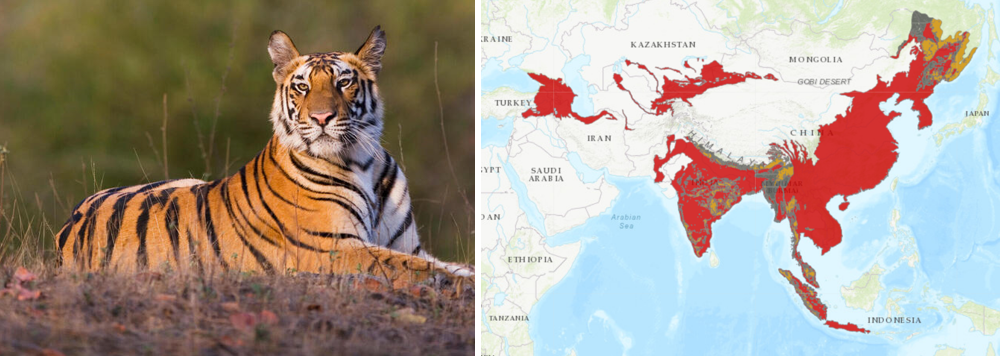
- World Tiger Day is observed every year on 29th July.
Initiatives for the Protection of Tiger
Project Tiger
- It is a Centrally Sponsored Scheme of the Ministry of Environment, Forest and Climate Change (MoEFCC).
- It was launched in 1973 for in-situ conservation of wild tigers in designated tiger reserves.
- The National Tiger Conservation Authority (NTCA) has an overarching supervisory role, performing functions as provided under the Wildlife (Protection) Act, 1972.
Global Tiger Forum (GTF)
- It is the only inter-governmental, international body working exclusively for the conservation of Tigers in the Wild. It is a forum of 13 tiger range countries.
- Goal: Doubling wild tigers count by 2022. India achieved this target in 2018, 4 years ahead of deadline.
Global Tiger Recovery Program
- It is an ambitious and visionary species conservation goal set by the governments of the 13 tiger range countries during the St Petersburg Summit 2010 (St. Petersburg Declaration).
TX2 Goal
- Target: To double the number of wild tigers.
- Supporting Agency: World Wildlife Foundation (WWF).
Conservation Assured | Tiger Standards (CA|TS)
- An initiative of the World Wildlife Foundation (WWF), it is a set of criteria that allows tiger sites to check if their management will lead to successful tiger conservation.
Global Tiger Initiative (GTI)
- It was launched in 2008 as a global alliance of governments, civil society and conservation and scientific communities to save wild tigers from extinction.
{GS3 – IE – Industry} 5G Auction
- Context (IE): The government is expected to conduct a 5G spectrum auction soon.
- This time, the spectrum auction is estimated to fetch the government around Rs 8,000-9,000 crore.
Spectrum Auctions
- Telecom signals are carried on specific frequency airwaves (Spectrum) to avoid interference.
- The central government conducts auctions through the Department of Telecommunication.
- The validity of the lease is for a certain period, generally set at 20 years.
- Telecommunications Act 2023 paved the way for auction as the preferred mode for spectrum allocation.
- The Telecom industry is raising concerns regarding the price and validity.

{GS3 – IE – RBI} Card-on-File Tokenisation
- Context (TH): The RBI has enabled Card-on-File-Tokenisation at the issuer bank level.
- Tokenisation is a service where a unique alternate code is generated to facilitate transactions through cards. It involves substituting a 16-digit customer card number with a token.
- Tokens are unique for a combination of cards, token requestors, and devices.
- The tokenized data is stored to bill the cardholders’ accounts for future purchases.
- The customer need not pay any charges for availing of this service.
- Tokenisation is not mandatory for a customer, and those who choose not to let their card be tokenized can continue to transact as before by entering card details manually.
- A customer can request for tokenization of his/her card on any number of devices.
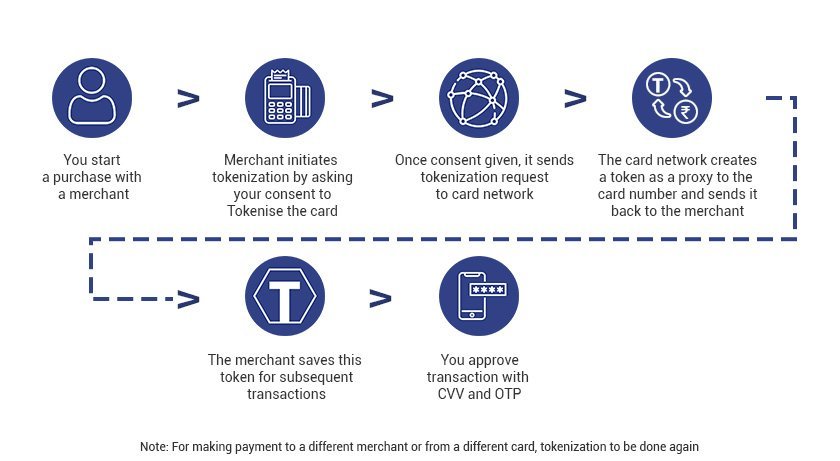 Tokenisation and de-tokenization can be performed by the authorised card network or by the card issuer.
Tokenisation and de-tokenization can be performed by the authorised card network or by the card issuer.- Benefits of tokenization: Token contains no personal information that can be directly accessed and keeps changing, making it the most secure method to complete payments.
- Applications: Tokens can be used for online transactions, mobile point-of-sale transactions or in-app transactions.
|
RBI Guidelines on Tokenisation
- Online payment aggregators are not allowed to store card number, CVV and expiry date for processing online transactions.
- Single-use provision: Tokens registered on one merchant cannot be used on another merchant.
{GS3 – IE – Securities} T+0 Settlement
- Context (IE): SEBI has proposed the introduction of a facility for clearing and settlement of funds and securities on T+0 (same day) and instant settlement cycle on an optional basis.
- At present, the settlement of funds and securities happens on the T+1 cycle introduced in 2021 and implemented in January 2023. Under it, securities and funds are settled by the next day of the trade.
- The United States, United Kingdom, and Eurozone markets have not moved even to the T+1 system.
- SEBI has now proposed to implement a shorter cycle of settlement in two phases:
- Phase 1– T+0 Settlement Cycle: In it, an optional T+0 settlement cycle is envisaged, with the settlement of funds and securities to be completed on the same day by 4:30 PM.
- Phase 2– Instant Settlement Cycle: In it, an optional immediate trade-by-trade settlement (funds and securities) may be carried out. Here, trading will be carried out till 3.30 pm.
- Initially, T+0 settlement shall be made available in the top 500 listed equity shares based on the market capitalisation.
Benefits
- Share delivery: In the T+0 cycle, the transaction will be delivered on the same day.
- A shorter cycle results in the reliability, low cost, and high speed of transactions.
- Faster fund remittances can occur by reduced capital requirement and increased capital liquidity.
- Reduced unsettled trades: Decreases the unsettled exposure to Clearing Corporation.
- Immunity to business shocks: The impact of counterparty insolvency/ bankruptcy on settling trade will be reduced.
{GS3 – IS – Initiatives} Information Fusion Centre – Indian Ocean Region (IFC-IOR)
- Context (WION): The Indian Navy’s IFC-IOR report highlights maritime security threats from drone attacks in the Indian Ocean region.
- IFC-IOR, hosted by the Indian Navy, was established by the GoI in 2018.
- It is a 24/7 regional information-sharing centre.
- It is established at Gurugram, Haryana, co-located with the Information Management and Analysis Centre (IMAC) which is jointly administered by the Indian Navy and Indian Coast Guard.
- Objective: Strengthening maritime security in the region and beyond, by building a common coherent maritime situation picture and acting as a maritime information hub for the region.
- IFC-IOR also hosts International Liaison Officers (ILOs) from partner nations, to enable better correlation, compressed information cycles and timely inputs.
- Through IFC-IOR, information on “white shipping”, or commercial shipping, will be exchanged with countries in the region to improve maritime domain awareness in the Indian Ocean.
|
|
SAGAR (Security and Growth for All in the Region)
|
{Prelims – S&T – Defence} INS Imphal
- Context (IE): INS Imphal (Pennant D68), the 3rd warship of Project 15B is set to be commissioned.
- It is designed by the Indian Navy’s Warship Design Bureau, and built by Mazagon Dock Shipbuilders Limited (MDL), Mumbai.
- It is powered by Combined Gas and Gas (COGAG) propulsion.
- The ship can reach a maximum speed of 30 knots and a maximum range of 4000 nautical miles.
Project 15B
- It is a follow-up to the P15A Kolkata class missile destroyers (INS Kolkata, INS Kochi, and INS Chennai).
- The four ships of Project 15B, INS Visakhapatnam (Pennant No D66), INS Mormugao (D67), INS Surat (under development), and INS Imphal (Pennant D68) are christened after major cities from all four corners of the country — Visakhapatnam, Mormugao, Imphal and Surat.
{Prelims – Sci – Bio – Diseases} Dengue
- It is a Vector-Borne Disease (VBD) caused by the dengue virus (Genus Flavivirus).
- Transmission: Dengue viruses are spread among humans through the bite of an infected Aedes species (Ae. Aegypti or Ae. Albopictus) mosquito that also transmits chikungunya, yellow fever, and Zika infection.
- Symptoms: Fever, aches, pains, rashes, nausea, vomiting, severe bone, joint, and muscle pain, etc.
- Treatment: There is no specific medicine to treat dengue. It is treated based on its symptoms.

|





![PMF IAS Environment for UPSC 2022-23 [paperback] PMF IAS [Nov 30, 2021]…](https://pmfias.b-cdn.net/wp-content/uploads/2024/04/pmfiasenvironmentforupsc2022-23paperbackpmfiasnov302021.jpg)


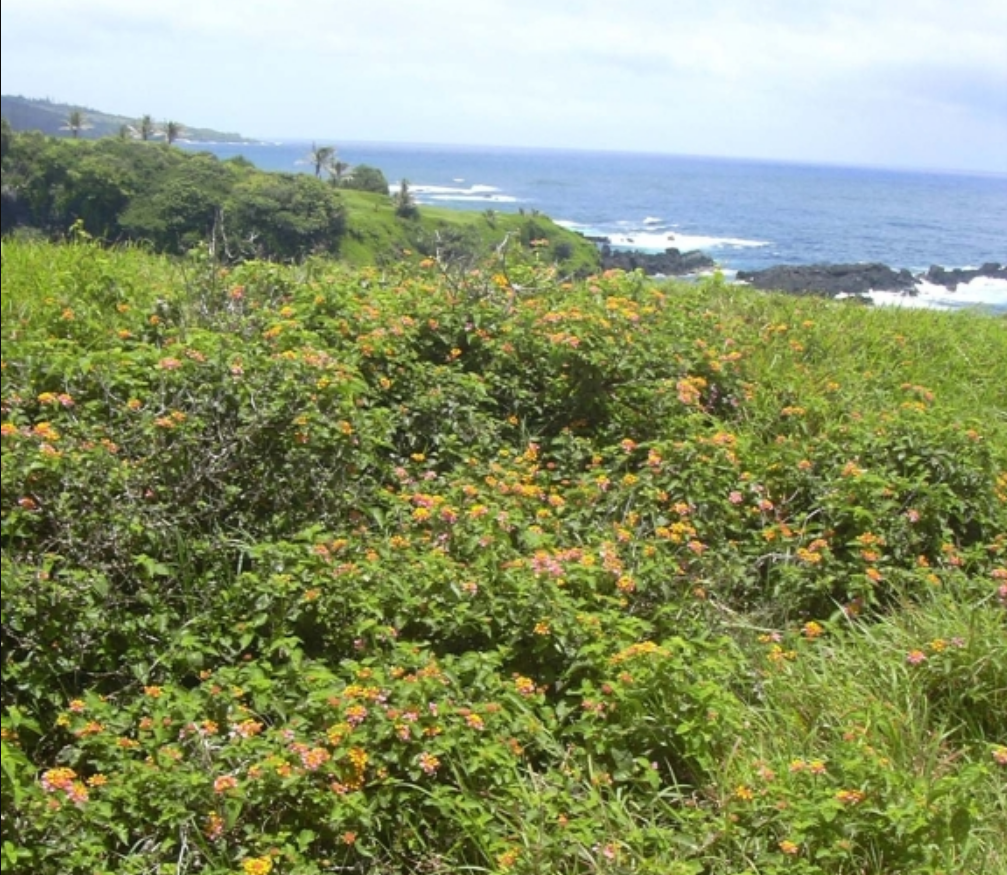
 Tokenisation and de-tokenization can be performed by the authorised card network or by the card issuer.
Tokenisation and de-tokenization can be performed by the authorised card network or by the card issuer.